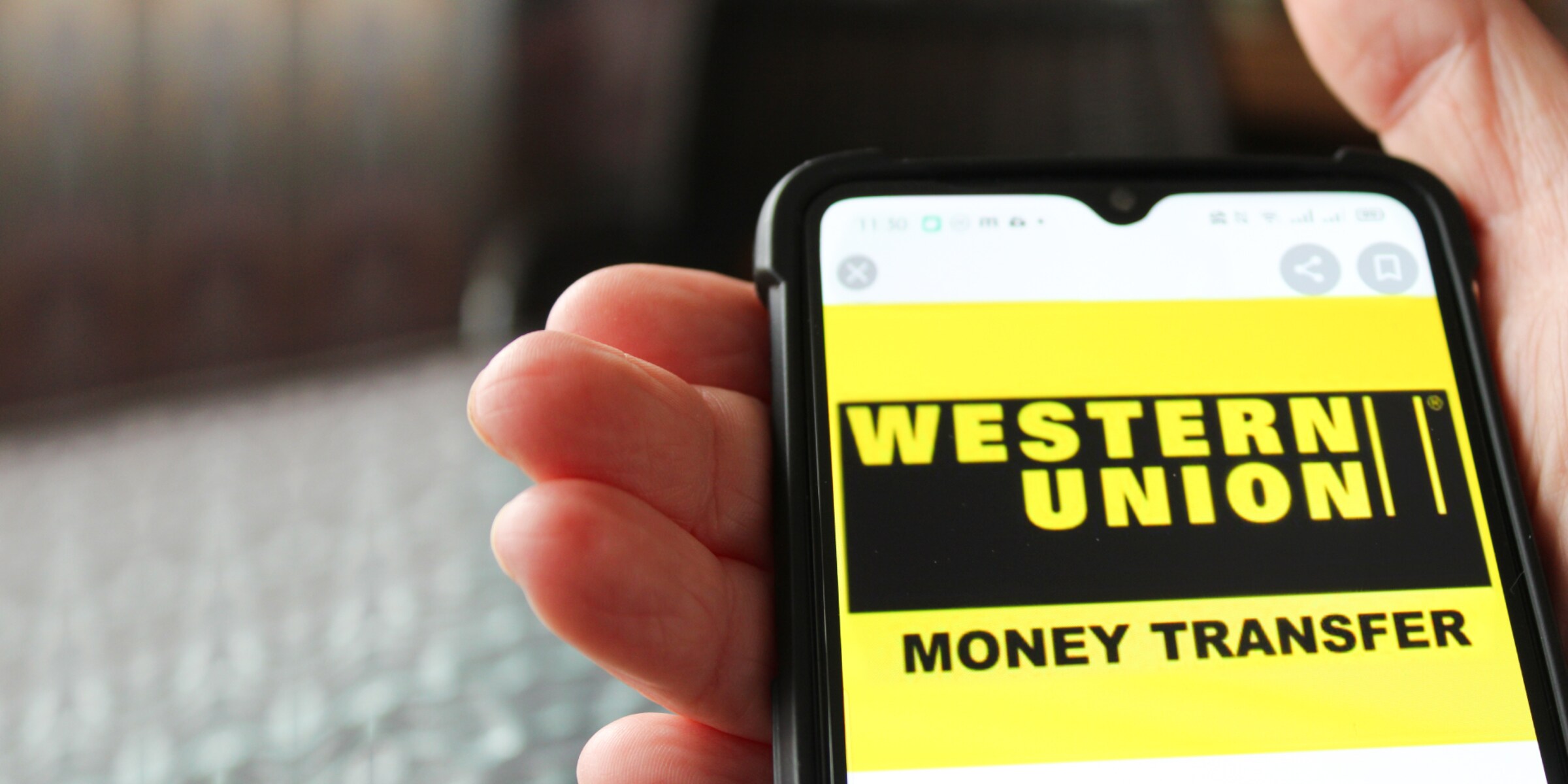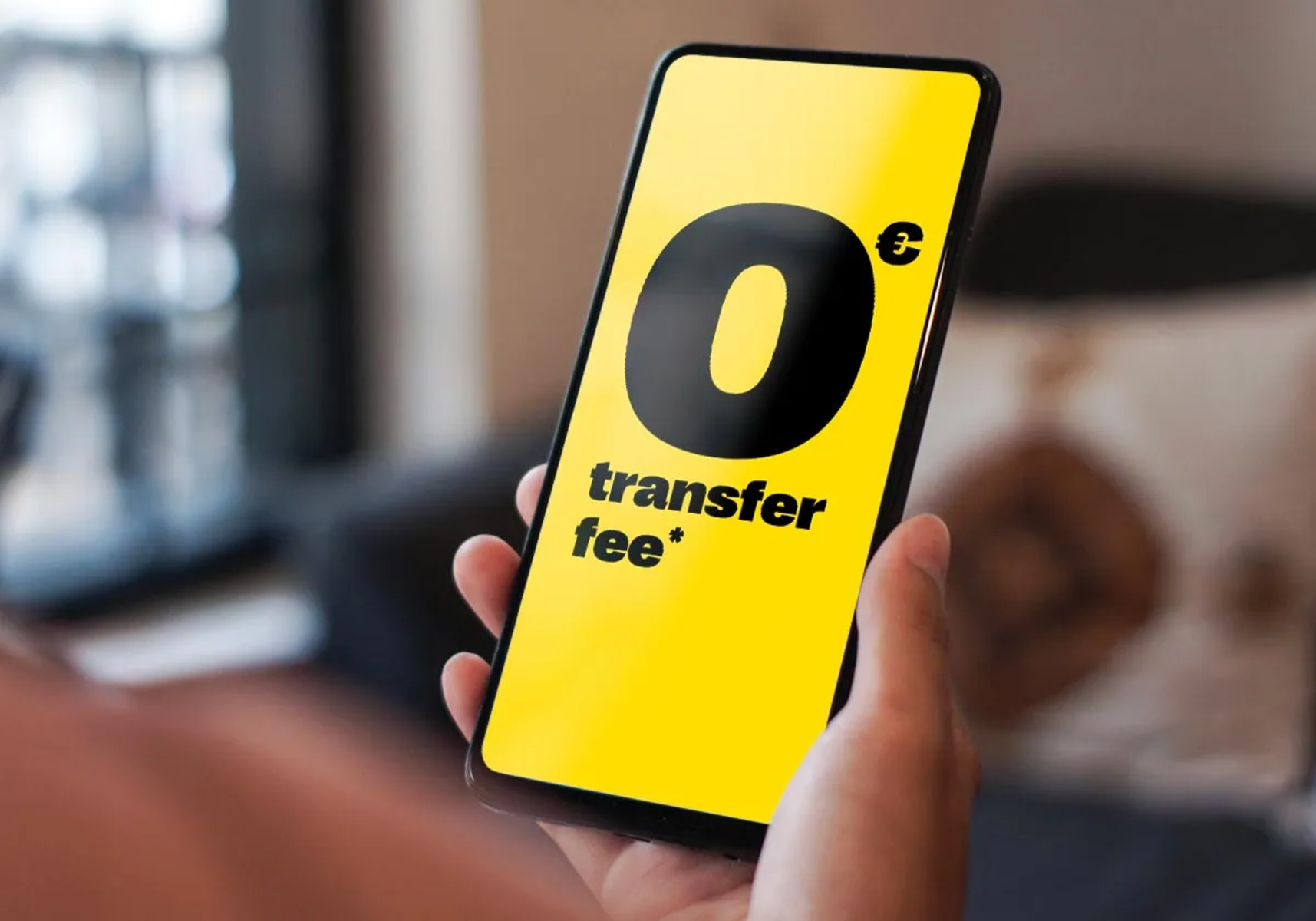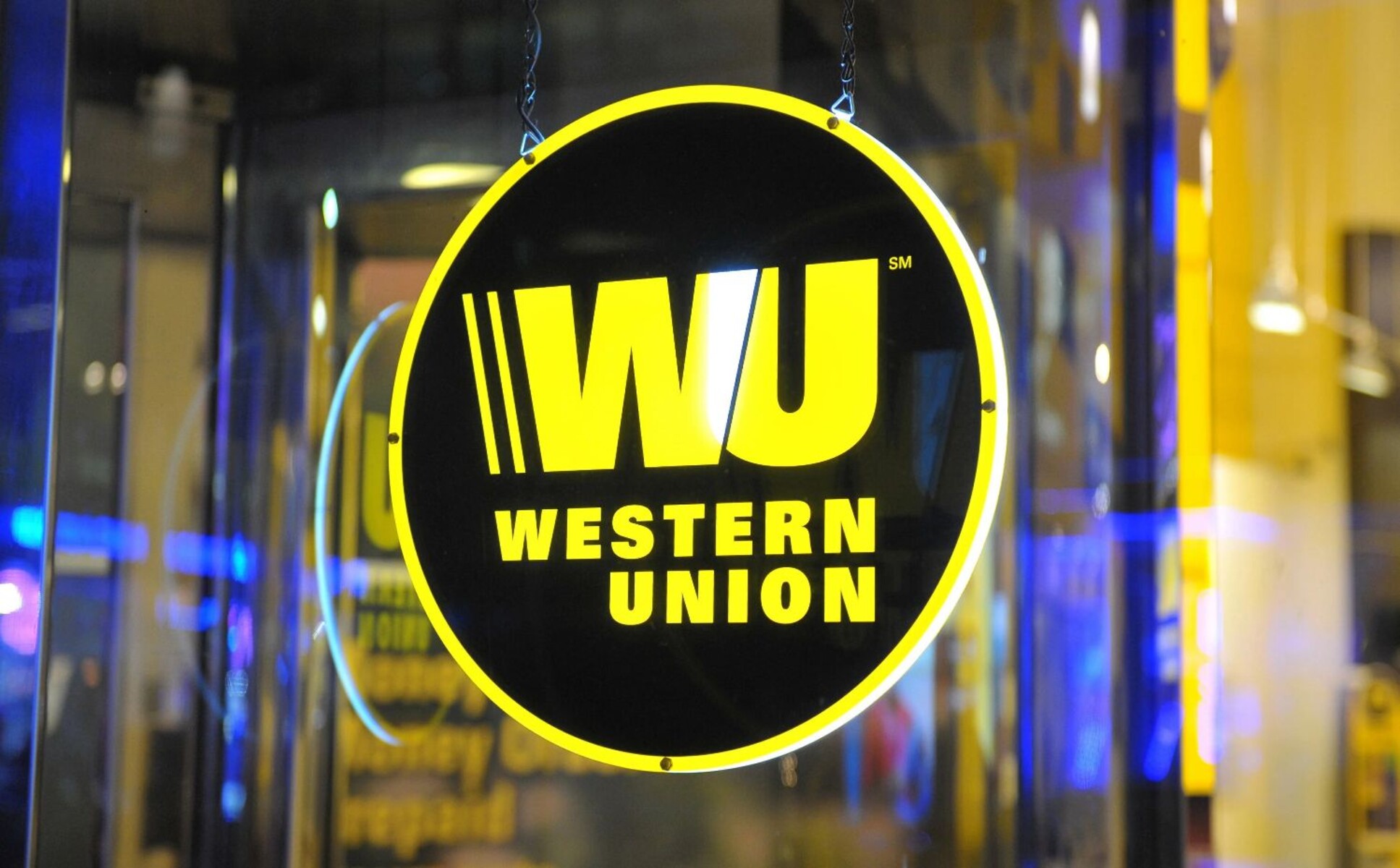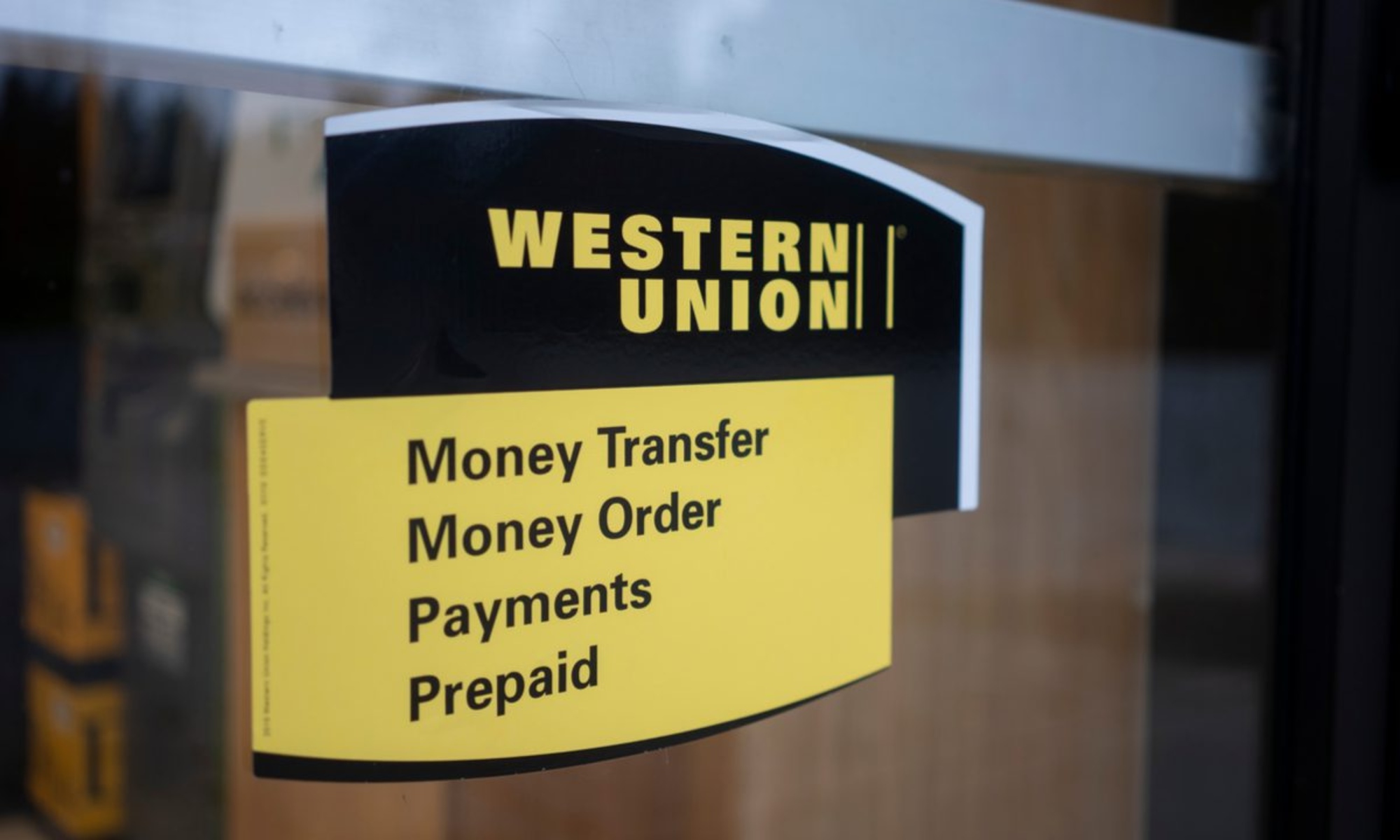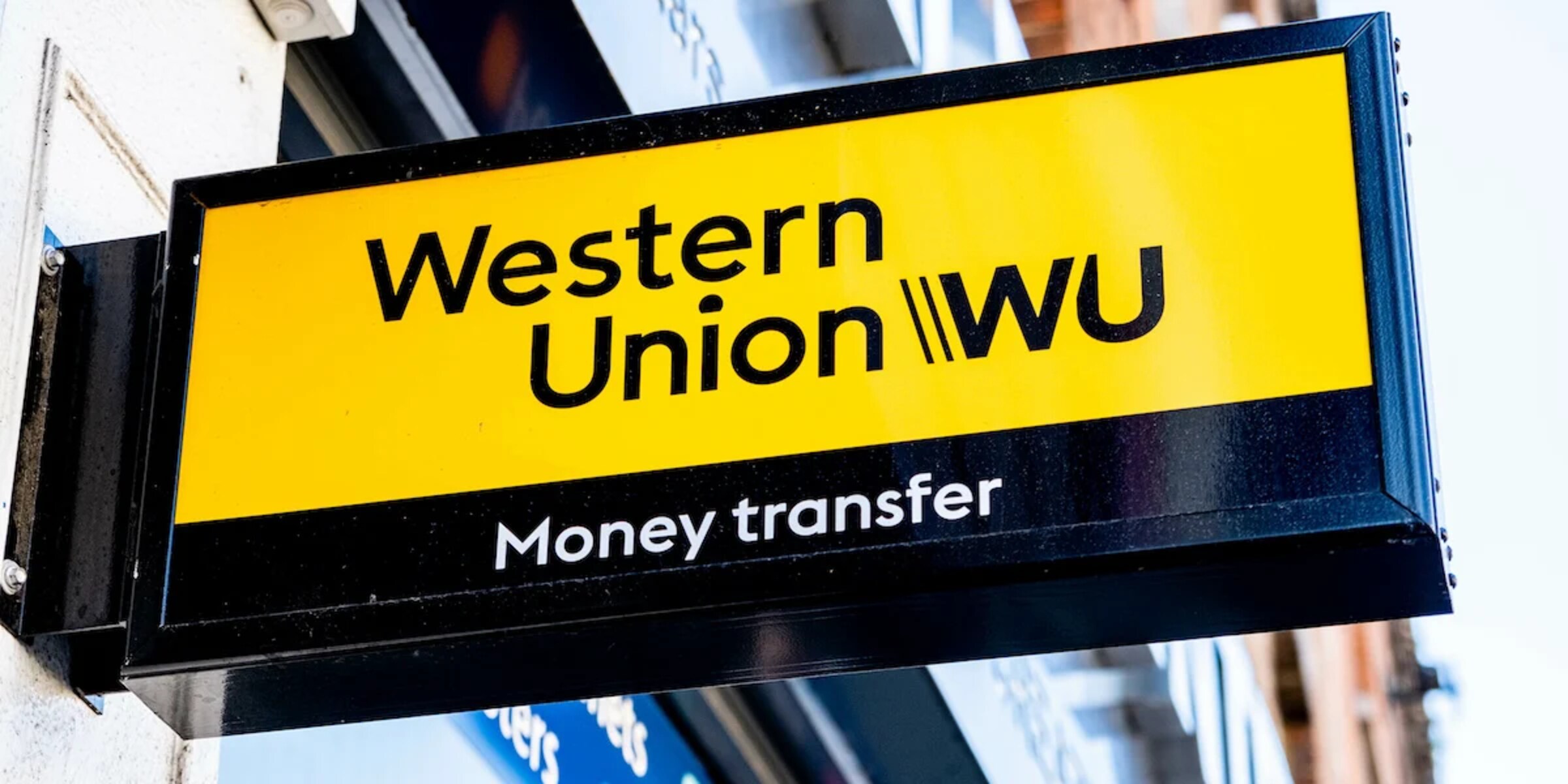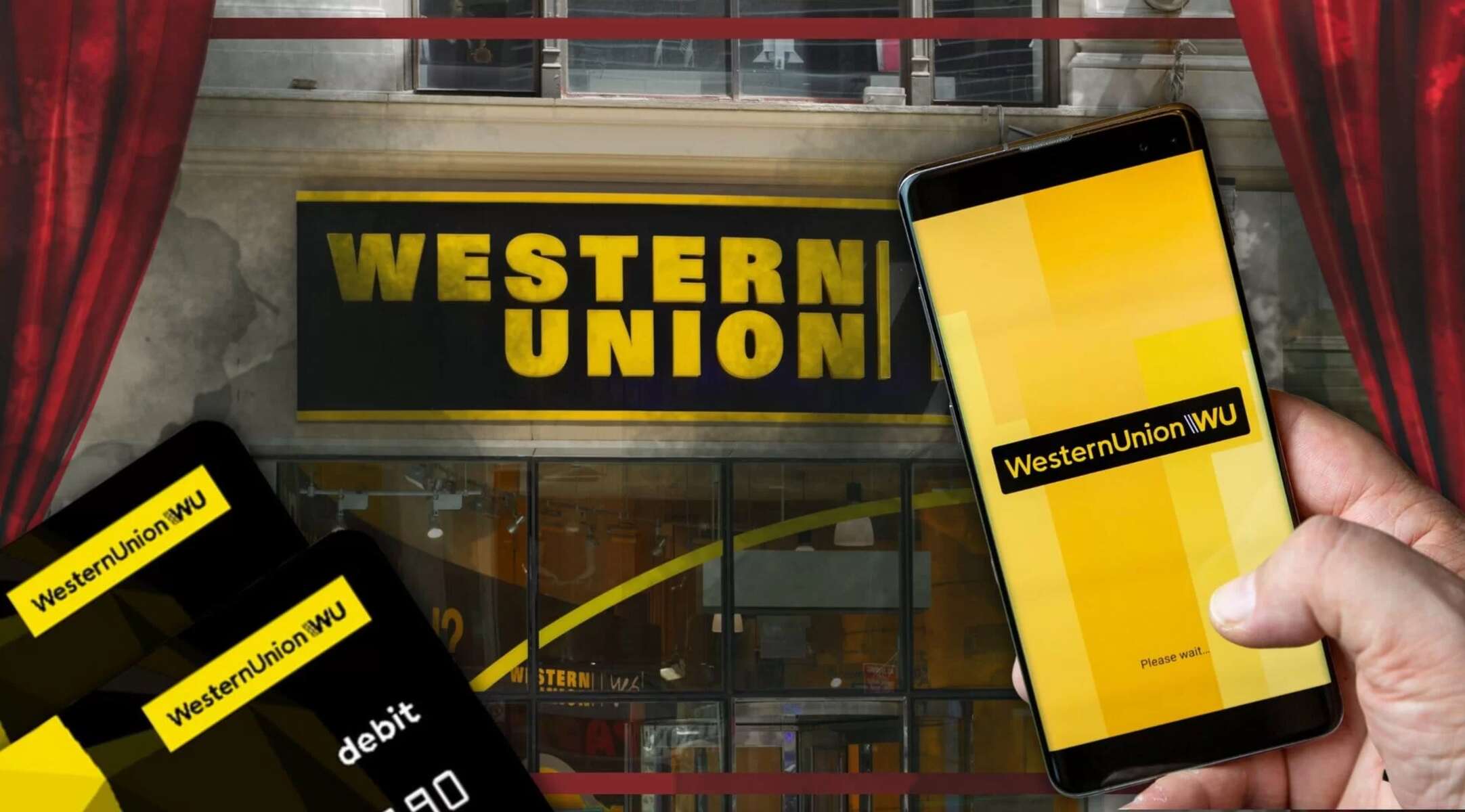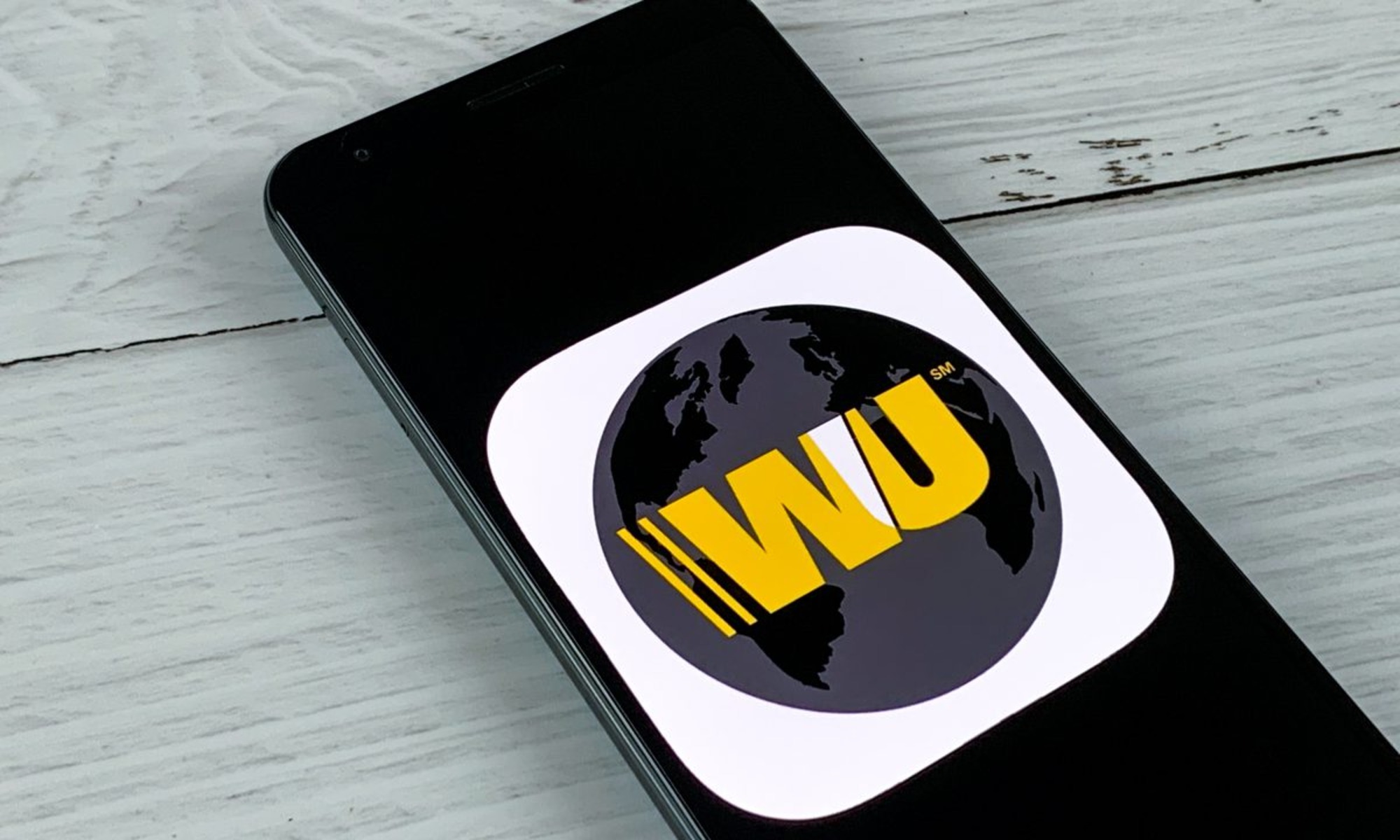Introduction
When it comes to transferring money, Western Union has been a trusted and reliable option for decades. Whether you need to send money to a loved one across the globe or receive funds from a business partner, Western Union offers a convenient and secure way to make money transfers.
In this guide, we will walk you through the process of setting up a Western Union account, understanding transfer fees and exchange rates, and choosing the right transfer option for your needs. We will also explore how to make a money transfer in-person at a Western Union agent location or online through their website or app. Additionally, we will cover essential information such as tracking your money transfer, ensuring security and fraud prevention, and troubleshooting common issues you may encounter during the process.
With Western Union, sending and receiving money is fast and straightforward. Whether you are sending funds to support family members, paying for goods or services, or receiving payments for work done, Western Union provides a reliable platform that allows for seamless and efficient money transfers.
Throughout this guide, we will provide you with step-by-step instructions and tips to ensure a smooth money transfer experience with Western Union. Whether you are a first-time user or a frequent customer, this guide will equip you with the knowledge and confidence to make your next money transfer effortlessly.
So, let’s dive in and explore all the essential information you need to know about transferring money with Western Union!
Setting Up a Western Union Account
Before you can begin transferring money with Western Union, you will need to set up an account. Fortunately, the process is quick and straightforward.
To get started, you can visit the Western Union website or download their mobile app from the App Store or Google Play Store. Once you have the app or are on the website, click on the “Sign Up” or “Create Account” button to begin the registration process.
Next, you will be prompted to provide your personal information, including your full name, date of birth, address, and contact details. Ensure that the information you provide is accurate and up-to-date, as it will be used for identification purposes.
After entering your personal information, you will be asked to create a username and password for your account. It’s essential to choose a strong password that includes a combination of letters, numbers, and special characters to ensure the security of your account.
Once you have completed the registration form and agreed to the terms and conditions, you will receive a confirmation email with a verification link. Click on the link to verify your email address and activate your Western Union account.
As an additional security measure, Western Union may also require you to provide additional verification, such as a copy of your identification document or proof of address. This step helps to prevent fraud and ensures the safety of your transactions.
Once your account is set up and verified, you can begin using Western Union to send and receive money. It’s important to remember your username and password or store them securely for future access to your account.
Now that you have successfully set up your Western Union account, you are ready to explore the different options for transferring money. In the following sections, we will discuss transfer fees, exchange rates, and the various transfer options available to you.
Understanding Transfer Fees and Exchange Rates
When using Western Union to transfer money, it’s important to understand the fees involved and how exchange rates are calculated. By having a clear understanding of these factors, you can make informed decisions and ensure that you get the best value for your money.
Transfer fees: Western Union charges a fee for each money transfer, which can vary based on several factors, including the amount being transferred, the destination country, and the transfer method. It’s important to check the fee schedule on the Western Union website or app to determine the exact fee for your specific transfer. Keep in mind that fees may change periodically, so it’s always a good idea to double-check before initiating a transfer.
Exchange rates: When sending money internationally, exchange rates play a crucial role. Western Union uses current market rates to convert your currency into the recipient’s local currency. It’s important to note that the exchange rate offered by Western Union may differ from the mid-market rate you see on financial websites. Western Union applies a margin on the exchange rate, which is how they earn profit for providing the service. To get an estimate of the exchange rate and the amount your recipient will receive, you can use the Western Union online calculator.
Timing: Exchange rates can fluctuate throughout the day due to market fluctuations. Keep in mind that the rate you see at the time of initiating the transfer may not be the same as the rate applied when the funds are received by the recipient. In some cases, the actual rate applied may be slightly higher or lower, depending on the timing of the transfer.
Hidden charges: In addition to the transfer fees and exchange rates, it’s important to be aware of any hidden charges or additional fees that may apply. For example, some recipient banks may deduct a receiving fee from the transferred amount, which can reduce the final amount the recipient receives. It’s a good idea to check with the recipient’s bank beforehand to understand if any additional fees will be applied.
By taking the time to understand the transfer fees and exchange rates, you can plan your transfers more effectively. If you have flexibility in timing, consider monitoring the exchange rates to find the most favorable time to initiate your transfer. Additionally, comparing the fees and rates offered by other money transfer providers can help you make an informed decision and potentially save money.
With a clear understanding of transfer fees and exchange rates, you are now ready to choose the right transfer option that best suits your needs. In the following section, we will explore the different transfer options available through Western Union.
Choosing the Right Transfer Option
Western Union offers various transfer options to accommodate different preferences and circumstances. When choosing the right transfer option, it’s important to consider factors such as speed, convenience, and cost. Let’s explore some of the available options:
1. Cash Pick-up: With this option, the recipient can collect the transferred funds in cash from a Western Union agent location. This is a convenient option for recipients who may not have a bank account or prefer to receive cash immediately.
2. Bank Deposit: This option allows you to transfer funds directly into the recipient’s bank account. It is a convenient and secure option, especially for larger transfers or for recipients who prefer the funds to be deposited directly into their bank account for easy access.
3. Mobile Wallet: Western Union has partnered with various mobile wallet providers, allowing you to send money directly to the recipient’s mobile wallet. This option is fast, convenient, and ideal for recipients who prefer digital transactions.
4. Prepaid Card: You can also choose to send money to a Western Union prepaid card, which the recipient can use for purchases or withdrawals. This option provides the recipient with the flexibility to access the funds conveniently.
When selecting the right transfer option, consider factors such as the availability of agent locations or bank branches in the recipient’s area, the level of convenience and security offered, and the preferences of the recipient. Additionally, it’s important to compare the fees associated with each transfer option.
Keep in mind that transfer options may vary depending on the country and the specific Western Union services available in that region. Therefore, it’s always a good idea to check the Western Union website or contact their customer service for the most up-to-date information on available transfer options and their associated fees.
Now that you understand the different transfer options, the next sections will guide you through the process of making a money transfer both in-person and online, ensuring you can choose the method that suits you best.
Making a Money Transfer In-Person
If you prefer to make a money transfer in-person, Western Union provides a network of agent locations worldwide where you can initiate your transaction. This option is ideal for those who may not have access to online services or prefer the assurance of face-to-face interactions. Here’s how to make a money transfer in-person with Western Union:
1. Find an Agent Location: Use the Western Union website or app to locate the nearest agent location. Simply enter your location details, and a list of nearby agent locations will be provided. You can also find agent locations by calling Western Union’s customer service helpline.
2. Prepare the Necessary Information: Before visiting the agent location, make sure you have the necessary information ready. Prepare your valid identification documents, such as a passport or national ID, and the recipient’s full name, contact details, and the destination country where the funds will be sent.
3. Complete the Send Money Form: Once you arrive at the agent location, request a Send Money form from the counter. Fill out the form accurately with all the required information. Double-check the recipient’s details to ensure the transfer is made to the correct person.
4. Present Identification and Transfer Funds: Hand over your identification documents along with the completed Send Money form to the agent. Depending on the country and local regulations, the agent may ask additional questions to confirm your identity and the purpose of the transaction. Once verified, provide the required amount in cash to the agent for the transfer.
5. Receive the Money Transfer Control Number (MTCN): After completing the transaction, the agent will provide you with a receipt that includes the Money Transfer Control Number (MTCN). The MTCN is a unique identifier used to track the transfer and is required by the recipient for picking up the funds.
6. Share the MTCN with the Recipient: Communicate the MTCN to the recipient securely. Advise them to carry a valid identification document and the MTCN when visiting the destination agent location for cash pick-up.
7. Keep the Receipt and Track the Transfer: Keep the receipt in a safe place as proof of the transaction. You can also track the transfer online using the Western Union website or app by entering the MTCN and other required details.
Making a money transfer in-person offers the advantage of immediate cash pick-up options and provides a level of comfort and security for both the sender and recipient. However, it’s important to be cautious when sharing the MTCN and ensure that it is only shared with the intended recipient to prevent any unauthorized access to the funds.
In the next section, we will explore the process of making a money transfer online through the Western Union website or app, offering a convenient alternative for those who prefer digital transactions.
Making a Money Transfer Online
If you prefer the convenience of making a money transfer from the comfort of your own home or through your mobile device, Western Union offers a user-friendly online platform. Here’s how to make a money transfer online:
1. Log in to Your Western Union Account: Visit the Western Union website or open the mobile app and log in to your account using your username and password. If you don’t have an account yet, refer to the “Setting Up a Western Union Account” section above to create one.
2. Select Your Transfer Details: Once logged in, select the type of transfer you wish to make, such as cash pick-up, bank deposit, mobile wallet, or prepaid card. Enter the recipient’s information, including their full name, contact details, and the destination country where the funds will be received.
3. Choose Your Payment Method: Select your preferred payment method for funding the transfer. Western Union offers various options, including credit/debit card, bank transfer, or using your Western Union prepaid card. Follow the prompts to provide the necessary payment information.
4. Verify the Transfer Details: Before confirming the transfer, carefully review all the details to ensure accuracy. Double-check the recipient’s information, the amount, and any associated fees. This step is crucial to prevent any errors or delays in the transfer process.
5. Pay and Confirm the Transfer: Proceed to make the payment for the transfer. Follow the instructions provided for your chosen payment method. Once the payment is processed successfully, you will receive a confirmation of the transfer.
6. Share the Transfer Details with the Recipient: Communicate the transfer details, including the Money Transfer Control Number (MTCN), to the recipient securely. The MTCN is crucial for the recipient to collect the funds or complete the transaction based on the chosen transfer option.
7. Track the Transfer: Use your Western Union account or the provided tracking service to monitor the progress of the transfer. This allows you to stay updated on the transfer’s status and estimated delivery time.
Making a money transfer online offers convenience, speed, and flexibility. It eliminates the need to visit a physical agent location and allows you to initiate the transfer at any time that suits you. However, it’s essential to ensure the security of your online transactions by using trusted internet connections and keeping your login credentials confidential.
Now that you’ve learned the process of making a money transfer online, the next section will guide you on how to track your money transfer to ensure it reaches the recipient as intended.
Tracking Your Money Transfer
Tracking your money transfer is an essential step to ensure that your funds reach the intended recipient in a timely manner. Western Union provides a convenient tracking service that allows you to monitor the progress of your transfer. Here’s how to track your money transfer:
1. Money Transfer Control Number (MTCN): The Money Transfer Control Number (MTCN) is a unique tracking number assigned to each Western Union transaction. When you initiate a transfer, you will receive the MTCN, which serves as the key identifier for tracking your transfer.
2. Western Union Website or App: Visit the Western Union website or open the mobile app and navigate to the “Track Transfer” or “Track Money” section. Enter the MTCN along with other required details, such as the sender’s name and the destination country.
3. Check the Status: Once you submit the tracking information, the system will display the current status of your transfer. This may include information such as whether the funds have been sent, picked up, or are still in transit. The status updates can provide you with peace of mind and help you stay informed about the progress of your transfer.
4. Estimated Delivery Time: Western Union also provides an estimated delivery time for the transfer. This gives you an idea of when the funds are expected to be available to the recipient based on the chosen transfer option and destination country.
5. Contact Western Union Customer Service: If you encounter any issues with tracking your transfer or need further assistance, you can contact Western Union’s customer service helpline. They will be able to provide real-time updates and help resolve any concerns you may have.
Tracking your money transfer ensures transparency and allows you to take appropriate action if there are any delays or complications. It provides you with peace of mind and helps you maintain confidence in the transfer process.
Keep in mind that the availability and level of tracking details may vary depending on the destination country and the specific transfer option chosen. Some countries may offer in-depth tracking capabilities, while others may provide minimal updates. It’s always a good idea to check the tracking feature regularly for the most accurate and up-to-date information on your transfer.
Now that we’ve covered the process of tracking your money transfer, the next section will focus on the importance of ensuring security and fraud prevention when using Western Union.
Ensuring Security and Fraud Prevention
When it comes to transferring money, security and fraud prevention are of utmost importance. Western Union takes several measures to ensure the safety of your transactions, but it’s essential for you to be vigilant and follow best practices to protect yourself and your funds. Here are some tips for ensuring security and fraud prevention when using Western Union:
1. Verify Recipient Information: Before initiating a transfer, double-check the recipient’s details, such as their name, contact information, and destination country. Ensuring the accuracy of this information helps prevent funds from being sent to incorrect or unauthorized recipients.
2. Protect Your Personal Information: As the sender, it’s important to keep your personal information confidential. Never share your Western Union account login credentials or personal identification documents with anyone. Be cautious of phishing attempts, which are fraudulent emails or calls requesting sensitive information.
3. Use Secure Internet Connections: When making a money transfer online, only use secure internet connections to access the Western Union website or app. Avoid using public Wi-Fi networks or unsecured connections that could expose your sensitive information.
4. Choose Strong Passwords: Ensure that your Western Union account password is strong and unique. Use a combination of letters, numbers, and symbols, and avoid using easily guessable information, such as your name or birthdate. Regularly update your password to enhance security.
5. Be Wary of Unsolicited Requests: Be cautious of unsolicited requests for money transfers, especially if you don’t know the sender or have any prior connection to them. Scammers may attempt to deceive you into transferring funds by creating false emergencies or promising unrealistic rewards.
6. Report Suspicious Activity: If you notice any suspicious activity or believe you have been a victim of fraud, report it immediately to Western Union’s customer service. They have dedicated teams that can investigate and take appropriate action to protect you and prevent further fraud.
7. Stay Informed: Keep yourself updated on the latest security measures and fraud prevention tips. Western Union provides educational resources on their website and regularly shares information about common scams and how to protect yourself.
By following these security practices and staying vigilant, you can minimize the risk of falling victim to fraud and ensure the secure transfer of your funds through Western Union.
In the next section, we will explore the process of receiving money with Western Union, ensuring that recipients can smoothly access the transferred funds.
Receiving Money with Western Union
Once a money transfer has been initiated through Western Union, the recipient can easily receive the funds. Western Union provides multiple options for convenient and secure money collection. Here’s how recipients can receive money with Western Union:
1. Cash Pick-up: If the sender has chosen the cash pick-up option, the recipient can visit a nearby Western Union agent location. The recipient should carry a valid identification document, such as a passport or national ID, along with the Money Transfer Control Number (MTCN) provided by the sender. At the agent location, the recipient will present the documents and MTCN to the agent to collect the funds in cash.
2. Bank Deposit: If the funds were sent directly to the recipient’s bank account, the recipient does not need to visit an agent location. The funds will be deposited into the recipient’s bank account, and they can access the money through normal banking channels, such as ATM withdrawals, online transfers, or over-the-counter withdrawals.
3. Mobile Wallet: For recipients who prefer digital transactions, Western Union offers the option to receive money into a mobile wallet. Once the transfer has been completed, the recipient will receive a notification on their mobile device, indicating that the funds are available in their mobile wallet. They can then use the mobile wallet to make digital purchases, pay bills, or transfer funds to other users.
4. Prepaid Card: If the sender has chosen to send money to a Western Union prepaid card, the recipient will receive the card in the mail. They can activate the card and access the funds by using it for purchases, ATM withdrawals, or online transactions, depending on the functionality of the card.
Regardless of the chosen method, recipients should always ensure that they have the necessary identification documents and the MTCN provided by the sender. Valid ID verification is required to guard against fraud and ensure that the funds are released to the intended recipient securely.
It’s important to note that some services may have specific requirements or limitations based on the country or region. Recipients should check the Western Union website or contact customer service for more information on the available options and any additional steps required.
Now that you have learned how recipients can receive money with Western Union, the next section will address common issues that may arise during the money transfer process and provide troubleshooting tips.
Troubleshooting Common Issues
While Western Union strives to provide a seamless money transfer experience, occasional issues or challenges may arise. Here are some common problems that users may encounter during the money transfer process and potential troubleshooting tips:
1. Transaction Delays: If your money transfer is experiencing delays, it’s essential to check the estimated delivery time provided by Western Union. Keep in mind that factors such as local banking hours, time zone differences, or unforeseen circumstances in the recipient’s country may cause delays. If the delay exceeds the estimated time, contact Western Union’s customer service for assistance.
2. Unable to Track Transfer: If you are having difficulty tracking your money transfer, ensure that you have entered the correct MTCN and other required details. Double-check the information provided by the sender for accuracy. If the issue persists, contact Western Union’s customer service, providing them with the relevant transaction details for further assistance.
3. Incorrect Recipient Information: If you realize that the recipient’s information provided during the transfer is incorrect, contact Western Union’s customer service immediately. They may be able to assist you in correcting the information before the funds are released or provide guidance on the necessary steps to rectify the situation.
4. Issues with Agent Location: In cases where you face difficulties at a specific agent location, such as unprofessional conduct or refusal to provide service, report the issue to Western Union’s customer service. They will investigate the matter and take appropriate action to ensure a satisfactory resolution.
5. Fraudulent Activities: If you suspect any fraudulent activities or believe you have been a victim of a scam, contact Western Union’s customer service immediately. Provide them with all relevant details and follow their guidance to safeguard your funds and protect yourself from any further fraud.
6. Refunds and Cancellations: If you need to cancel a money transfer or request a refund, review Western Union’s refund policy and reach out to their customer service for guidance. Keep in mind that refund eligibility and applicable fees may vary depending on the specific circumstances and local regulations.
Remember, Western Union’s customer service team is available to assist you with any issues or concerns you may encounter during the money transfer process. They have dedicated resources to handle troubleshooting and provide solutions tailored to your specific situation.
If you experience any problems, it’s important to act promptly and provide all the necessary details to ensure a swift resolution. Regular communication with Western Union’s customer service will help address the issue effectively and provide you with peace of mind.
In the final section, we will summarize the key points discussed and provide a concluding remark to wrap up the guide on transferring money with Western Union.
Conclusion
Transferring money with Western Union offers individuals a convenient and reliable means of sending and receiving funds across the globe. In this guide, we have covered important steps and considerations for successfully navigating the Western Union money transfer process.
We started by discussing how to set up a Western Union account, ensuring that you have a secure and accessible platform to initiate your transfers. Understanding transfer fees and exchange rates was another crucial aspect we explored, providing insights into how to calculate costs and make informed decisions.
We then delved into the different transfer options available, including in-person transfers at agent locations and online transfers through the Western Union website or app. We highlighted the steps involved in each method to help you choose the option that aligns with your preferences and needs.
Tracking your money transfer was emphasized as an essential practice to ensure the timely and secure delivery of your funds. We shared tips on how to track transfers using the provided Money Transfer Control Number (MTCN) and the Western Union tracking service.
To maintain security and prevent fraud, we outlined important measures such as verifying recipient information, protecting personal information, using secure internet connections, and being cautious of unsolicited requests or scams.
Additionally, we covered the process for recipients to receive money through various methods, such as cash pick-up, bank deposits, mobile wallets, and prepaid cards. We highlighted the importance of having the necessary identification documents and shared troubleshooting tips for common issues that may arise during the transfer process.
As with any service, it’s important to always stay updated on Western Union’s latest policies, services, and security practices. Regularly visiting their website and staying in touch with customer service will ensure that you are equipped with the most accurate and up-to-date information.
In summary, Western Union provides a trusted and secure platform for money transfers, connecting individuals across the globe. By following the steps outlined in this guide and adopting best practices for security and fraud prevention, you can confidently utilize Western Union’s services for your financial needs.
Now that you have a comprehensive understanding of transferring money with Western Union, you are ready to embark on your next transaction with confidence and ease.







